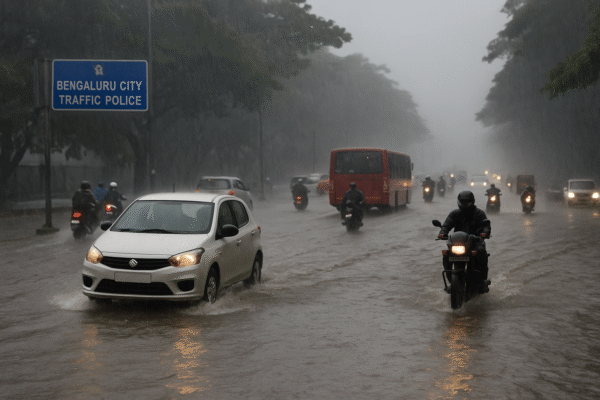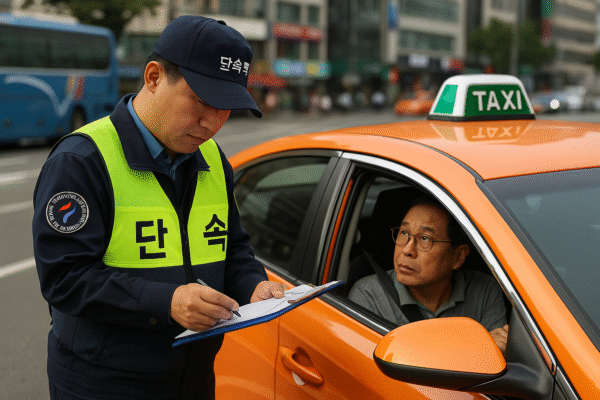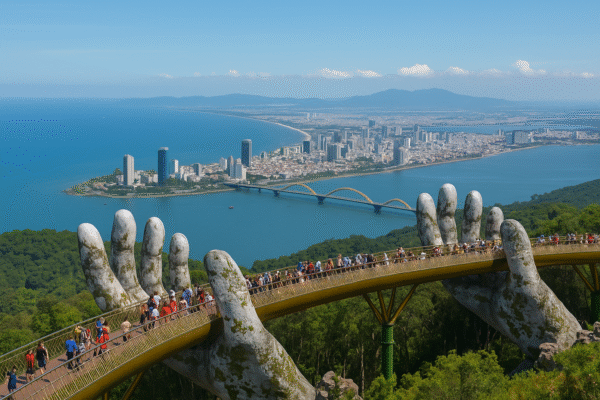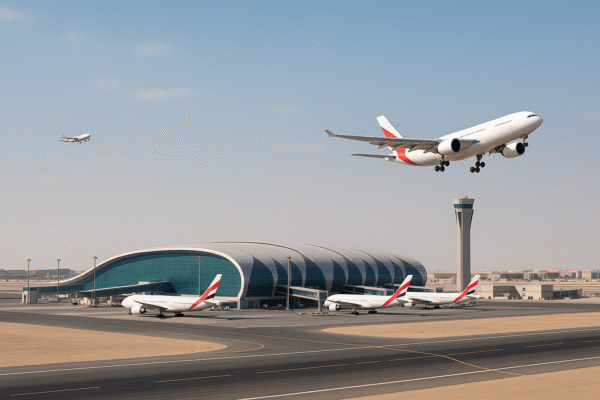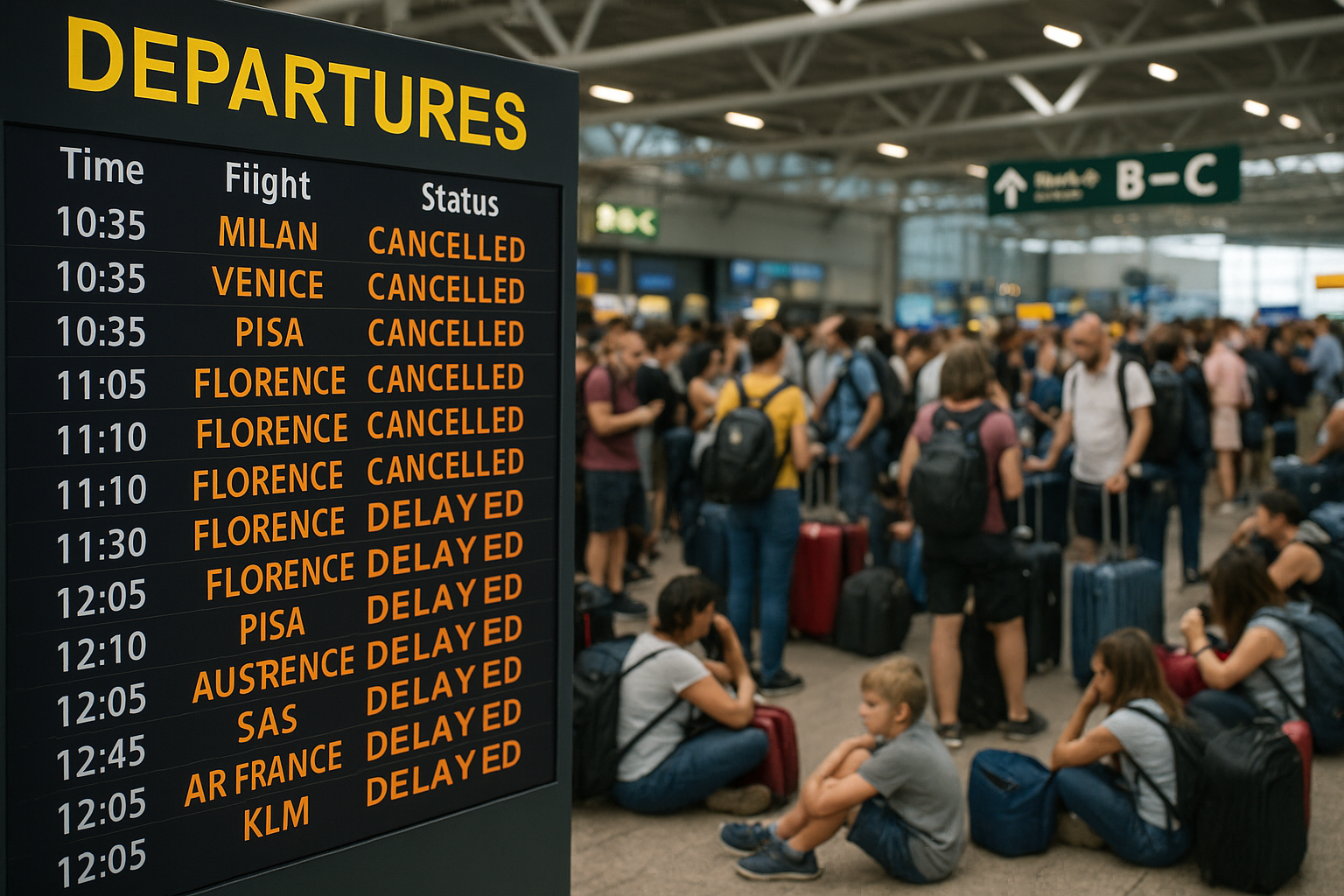A sweeping nationwide strike across Italy has thrown the country’s transport system into disarray, grounding over 160 flights and severely impacting travelers at Milan Malpensa, Venice Marco Polo, Pisa Galileo Galilei, and Florence Vespucci airports. The walkouts, led by grassroots labor unions, also disrupted rail networks and public transit, compounding frustrations as Italy heads into its peak summer tourism season.
Airlines including Air France, Lufthansa, United, Turkish Airlines, Austrian Airlines, SAS, and ITA Airways were among those affected, with travelers facing hours-long delays, cancellations, and uncertain rebooking options.
Milan Malpensa Hit Hardest by Strike Fallout
Milan Malpensa International Airport (MXP), Italy’s second-busiest hub, recorded the highest number of disruptions—31 cancellations and 58 delays. Major airlines such as United Airlines, American Airlines, Lufthansa, Air France, and Austrian Airlines were forced to cancel transatlantic and intra-European flights.
Ryanair alone cancelled 10 flights, while easyJet, which maintains a significant presence in Milan, reported 34 delayed flights. Austrian Airlines cancelled nearly 40% of its departures, further straining connectivity with Central Europe.
Passengers at Malpensa expressed frustration over limited communication, long lines at service desks, and uncertainty around refunds and accommodations. Affected routes included key services to New York, London, Frankfurt, and Brussels.
Venice Marco Polo Disruption Derails Travel to Northeast Italy
At Venice Marco Polo Airport (VCE), 19 flights were cancelled and 15 delayed as ground staff, baggage handlers, and air traffic personnel joined the strike. Major disruptions were felt by Ryanair, Air France, KLM, United, and Austrian Airlines.
Ryanair alone cancelled eight flights from Venice, and long-haul operations like Delta Air Lines and Turkish Airlines also reported significant schedule changes. Travelers bound for Venice—a gateway to Italy’s northeastern cities and Adriatic coastline—were forced to rebook through alternative hubs like Verona or Bologna.
Pisa and Florence Also Suffer Heavy Impacts
Pisa’s Galileo Galilei International Airport (PSA) reported 14 flight cancellations and 12 delays, most of which involved Ryanair, Pisa’s leading low-cost carrier. Additional delays affected easyJet, Jet2, Aer Lingus, and Norwegian Air Shuttle.
Meanwhile, Florence’s Amerigo Vespucci Airport (FLR) logged 10 cancellations and 5 delays. Affected airlines included Vueling, Austrian Airlines, Brussels Airlines, Swiss, and Air France, as airport operations slowed amid reduced staffing.
Though smaller than Milan or Venice, Pisa and Florence serve critical roles in Tuscany’s tourism economy, especially during peak summer months. The strike’s impact extended beyond flight schedules, affecting tour operators, cruise connections, and hotel check-ins across the region.
ITA Airways Cancels Dozens of Domestic and International Flights
Italy’s national airline, ITA Airways, cancelled 34 flights systemwide, including core routes between Rome, Milan, and major European cities such as London and Paris. Despite Italian labor laws protecting flight operations during set windows (07:00–10:00 and 18:00–21:00), carriers were overwhelmed by ground staff shortages and aircraft rotations delayed by cascading disruptions.
ITA issued passenger waivers and urged travelers to monitor flight statuses, but many fliers found themselves stranded at terminals due to missed connections and lack of alternative transport.
Rail and Urban Transport Also Affected Nationwide
The strike rippled well beyond airports. Italy’s national railway operator, FS Italiane, cancelled dozens of Frecce, Intercity, and regional trains, particularly impacting services between Rome, Milan, Naples, and Florence. Thousands of tourists and commuters were stranded at Milan Centrale, Termini Station, and Santa Maria Novella.
Urban transit networks were also affected. In Rome, ATAC guaranteed limited service from 5:30 a.m. to 8:30 a.m. and again from 5:00 p.m. to 8:00 p.m. In Milan, ATM buses and metro services ran only between 6:00 a.m. to 8:45 a.m. and 3:00 p.m. to 6:00 p.m.
Travelers took to social media to express dismay, with photos of packed stations and tourists confused about cancellations. Some reported arriving at rail stations without signage or English-language assistance.
Union Demands: Public Investment Over Militarization
The strike was organized by several grassroots trade unions, including USB, CUB, SGB, FISI, and FLAI, calling for increased public investment in transport, healthcare, education, and worker safety. Union leaders criticized the Italian government’s budget priorities, particularly increased military spending amidst underfunded public services.
The strike included both public and private sector workers, paralyzing airports, railway operations, ports, tram networks, and more. Union representatives described the protest as a “necessary act of civil resistance” against austerity-driven governance.
Recurring Travel Strikes Pose Risks for Summer Tourism
Italy has seen a series of transport strikes in recent years, often held on Fridays to maximize pressure. For travelers, it adds a layer of unpredictability during key holiday windows.
With the summer travel season now in full swing, tourism operators and airlines worry about repeated disruptions. Italy remains one of the most visited countries in Europe, drawing over 60 million tourists annually, many of whom rely on rail-air combos to explore the country’s diverse regions.
What Travelers Should Do
Tourists and business travelers scheduled to fly to or through Italy are advised to:
- Check airline notifications frequently
- Confirm train connections and station status in advance
- Avoid scheduling travel on Fridays, a common day for strikes
- Download local transit apps for Milan, Rome, and Venice to stay informed
- Arrive early and have flexible plans in case of last-minute cancellations
As Italy’s transport sector braces for potential future actions, travelers should remain vigilant. With international carriers deeply affected and infrastructure under strain, the 2025 summer travel season is off to a turbulent start.




